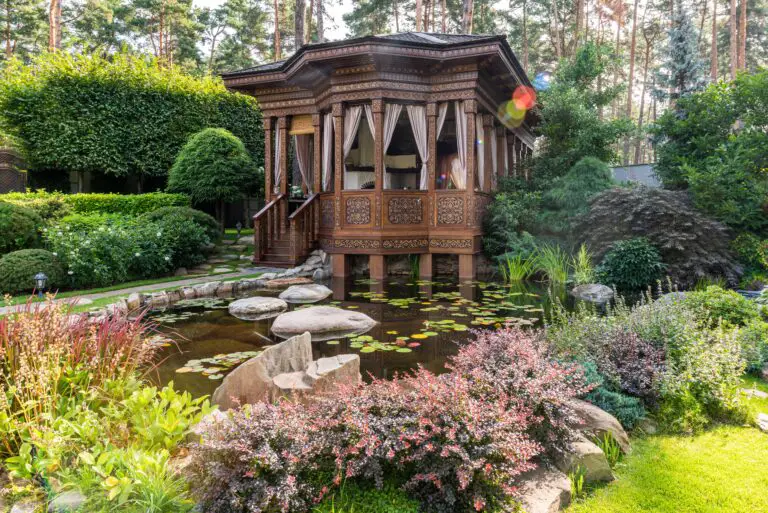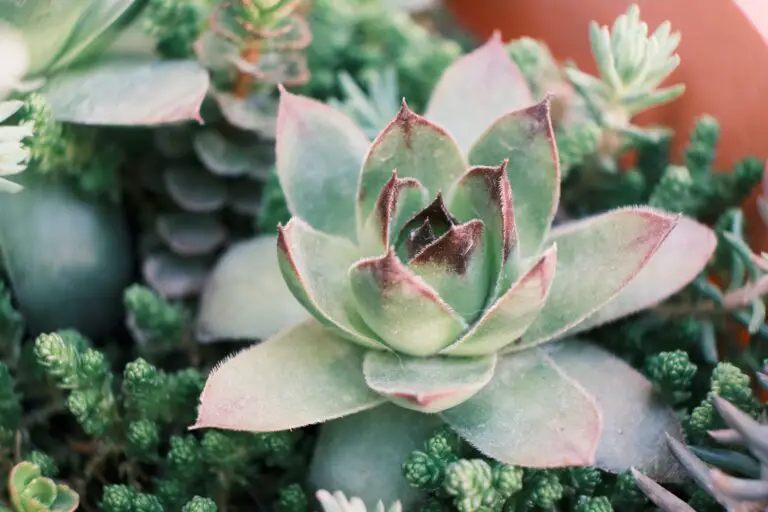Introduction to Sedum
Beloved by green thumbs and novice gardeners alike, sedum plants have carved their niche in the horticultural world as versatile and hardy succulents. With their lush, fleshy leaves and starburst flowers, they paint gardens with a palette of vivid greens and warm autumn hues. But can these terrestrial treasures transcend their soil-bound roots to flourish submerged? In this exploration, we wade into the concept of growing sedum in water, teasing out the feasibilities and fantasies of such an endeavor.

This piece is not your run-of-the-mill gardening guide. As we dive into the aquatic aspirations of sedum, we’ll traverse from familiar garden beds to the less-charted waters of hydroponic habitats. But before we swap out potting mix for ponds, let’s acclimate ourselves to the world of sedum—a world where versatility meets vitality. Will these plants merely survive an aquatic life, or could they potentially thrive, teasing out breathtaking underwater beauty in a way we’ve never witnessed before?
Curiosity piqued? Embrace the flow as we embark on a botanical journey through the looking glass and into the water. For further insights into the adaptability of sedum and succulents, take a moment to unravel the mystery of stonecrops in their natural habitat and beyond.
Sedum’s Natural Habitat
Have you ever wondered where the versatile and vibrant sedum plants originally made their home? Typically spotted in the arid deserts, rugged mountains, and sometimes even in the cracks of a bustling city sidewalk, sedum plants have developed quite a reputation for adaptability and resilience. These hardy little succulents are known to grace the landscapes of the northern hemisphere, with a handful found scampering across the southern parts too!

Thriving in well-drained soils, the sedum, often hailed as ‘nature’s hardworking carpet’, sits proudly across various regions from scrublands to alpine nooks. Whether it’s the sun-soaked landscapes of the Mediterranean or the cooler, temperate settings of North America and Asia, these delightful stonecrops adorn nature with their fleshy, water-storing leaves and star-shaped blooms.
Sedum has an intrinsic ability to withstand drought and neglect, which begs the question: if you find yourself in a pinch, could these succulents survive less hospitable conditions, say, completely submerged? The sedum’s natural habitat suggests a preference for ‘dry feet’, yet gardeners with a curious streak have experimented with sedum in water features. Our guide on succulent care sheds light on some dos and don’ts that might surprise you.
From intense sunlight battering down on semi-arid cliffs to the dappled shade cast by a conifer high in the mountains, sedum’s home is as diverse as its many species. Next time you pass by these sturdy plants, consider the journey they’ve made from their natural, wild corners of the earth to the comfort of your garden pots and rockeries. And while they’re happily soaking up the rays or braving a cold snap, ponder the question: Can Sedum Thrive Submerged? It’s quite the aquatic conundrum!
The Feasibility of Water Growth
Ever looked at a sedum and wondered if this resilient plant can exchange its dry, rocky haven for a life aquatic? Let’s probe into the sedum’s adaptability and consider what happens when this succulent dips its toes—well, roots—into the water world. You’ve probably seen sedum thriving atop rocky ledges or creeping along garden paths, but how about partially submerged in a pond? Let’s dive in!
First off, sedum plants are celebrated for their hardiness and ability to weather harsh environments. But does this toughness extend to floating about in a pond or sitting pretty in a hydroponic system? There’s a significant difference in how sedum copes with temporary verses permanent submersion. A short stint in water? The plant may not throw a fit. But to have it fully submerged, making like a fish, is another story. The crucial point here is that sedum roots seek oxygen, and being underwater can cut off their supply, leading to root rot—nobody wants that.
Now, I’m not saying it’s mission impossible. There are tales of gardeners who experimented with keeping sedum in water for the ‘gram, and they did witness some short-term growth. They just likely won’t be setting up any long-term residency. In the wild, sedums can occasionally handle a splash when the heavens open up or a river oversteps its bounds, but a permanent life submerged? It’s akin to asking a cactus to take up surfing—it’s just not in their nature.
If you’re tempted to give this a whirl—and I know some of you adventurous gardeners are itching to try—think about sedum’s love for a quick-drain home. If you ensure that any aquatic adventure allows the roots to occasionally get a gulp of fresh air, you might just witness some astonishing results. But remember, permanent submersion is not a sedum’s cup of tea—or in this case, cup of water.
Just like that friend who can’t stay in the pool for too long without shriveling up, sedum has its limits. By now, you’re probably getting the picture: sedum might just pull off a short-term stunt in water, but it’s a landlubber at heart. For those looking to expand their plant repertoire with some aquatic experiments, always remember to play to the strengths of these sun-loving succulents.
The Science of Succulents in Water
Imagine wandering through a sunbaked desert, where the land is etched with the artwork of survival, and you stumble upon an oasis of verdant sedum plants. This visual may seem out of place, given that these plump, fleshy plants are the poster children for drought tolerance. They’re built for the barren; their very biology shouts adaptation to scarcity. So the burning question is: Can sedum thrive submerged in H2O’s embrace?
Sedum plants, a diverse group of succulents, are the Zen masters of water storage, toting their own built-in water bottles in the form of succulent leaves. These thick, waxy leaves are their secret to smiling through dry spells. But here’s the catch – this specialization that makes them kings of arid plains can turn into their very weakness when placed in an aquatic environment. Too much water, and their cells stretch out like water balloons ready to pop, leading to a soggy demise.

Let’s dive deeper into the science behind this survival strategy. Succulents like sedum are equipped with CAM photosynthesis – a fancy term for a night-shift metabolism that minimizes water loss during the heat of the day. But when submerged, this system is akin to wearing a fur coat in a sauna; it just doesn’t match the environment. While a fur coat can be removed, a sedum’s internal workings take a turn towards the tragic when their drought defenses are submerged.
But nature is a crafty engineer, and it turns out, not all hope is lost for sedums taking a dip. The key lies in moderation and adaptation. Some gardeners have flirted with the idea, using hydroculture techniques to let sedums’ toes – or rather, roots – wade in water periodically. Mind you, this isn’t a full plunge – think of it as dipping your feet into the pool rather than committing to the deep end.
Through trial, error, and a touch of science, these plants can indeed graze the water’s surface without being engulfed by it. A neural network of roots can take sips in a controlled environment, showcasing that with human ingenuity, even sedum can break its terrestrial chains – to an extent. The balance is delicate, though; too much water and the plant may succumb to rot, too little and it crisps up. It’s a fine line between aquatic adventure and watery grave.
So, does this mean that your next aquarium setup could feature a flourishing sedum? Not quite. While they can play at the water’s edge under careful oversight, sedum plants are truly the children of the desert, singing songs of survival in the sands, not the sea. In the end, their ideal performance still lies under the vast, open skies, on rocky ledges, and in the nooks of drought’s domain.
How to Propagate Sedum in Water
Ever wondered if your sedum plants could take a dip and still strike new roots? Let’s dive into the world of water propagation—a simple yet exciting approach to multiplying your green friends. Propagating sedum in water isn’t just doable; it’s a window into the remarkable adaptability of these succulents. Ready to get your feet wet?
Snip and Dip: Your First Steps
First things first, select a healthy sedum stem and make a clean cut using a sterilized pair of scissors or a knife. Aim for a 3-4 inch cutting, making sure there are a few leaves on top and a clean stem below. Now for the fun part: submerge the stem end in a glass of water. Just make sure no leaves are underwater, or they may rot. Place your glass in a spot with bright, indirect light, and watch the roots emerge like magic!
Water Wisdom: Tips for Sedum Success
Keep the water fresh! Change it every few days to prevent bacteria build-up, which could spell disaster for your cuttings. Temperature matters too—room temperature is ideal. Too cold and roots may be shy, too warm and algae could crash the party. As roots form, whisper words of encouragement (just kidding, but positive vibes never hurt).
Common Pitfalls: Steering Clear of the Plunge
It’s not all smooth sailing. Avoid common mistakes like overcrowding the glass—each cutting needs its space to thrive. Also, resist the urge to tug on the stem; roots are delicate, especially in their watery cradle. And remember, not all sedums are eager swimmers; some may take longer to root or prefer soil to water. Select varieties known for their aquatic agility!
Real-Life Success: From Water to Soil
Picture this: You’ve got a friend, Sarah, who couldn’t keep a cactus alive. Fast forward a few weeks after trying water propagation, and she’s gifting homegrown sedum cuttings like a green thumb guru. It’s that simple and satisfying. Don’t just take our word for it; give it a shot and turn your windowsill into a nursery of floating greenery!
Ready for a visual guide? Check out this informative video on sedum water propagation that walks you through the process:
By following this guide, you’ll be well on your way to propagating your sedum in water successfully. Remember, patience is key, and soon you’ll have an army of sedums ready to conquer land and sea. So go ahead, let your sedums take the plunge and watch them thrive in their aqueous adventure!
Transitioning from Water to Soil
So you’ve mastered the aquatic arts, and your sedum has been thriving in its cozy, watery abode. But now, the time has come to embark on a new adventure: transitioning your watery warrior into the vast expanse of soil. Fear not! With a bit of knowledge and a sprinkle of patience, you can seamlessly guide your sedum from liquid living to terrestrial triumph!
First off, let’s chat about why it’s downright crucial to take this step gingerly. Picture this: your sedum is like a deep-sea diver acclimatizing to the surface. Move too fast, and you risk shocking this delightful diver – otherwise known as your plant – stunting its growth or, worse, sending it to the great garden in the sky. We certainly don’t want that!
Start by dialing back on your normal watering schedule. Think of it as a gradual goodbye party where the drinks (water, in this case) are served less and less frequently. This gentle reduction prepares your sedum’s roots for the change in moisture levels they’ll encounter in soil. The goal here is to mimic soil conditions, nudging your sedum’s roots to yearn for the heft and hug of a good old-fashioned dirt nap.
Now, let’s talk dirt – literally. Choosing the right soil is like picking a mattress for yourself; you want that perfect blend of comfort and support. Go for a well-draining succulent mix, chock-full of perks like perlite, sand, or volcanic rock. This mix will ensure your sedum’s roots won’t feel waterlogged and can breathe easy, just like they did in their aquatic beginnings.
But before you plop your plant into its new earthy bed, let’s perform a little root rehab. Trim any overly long or rotten roots with the precision of a bonsai artist. Clean cuts mean less stress for your plant and a better chance of it grabbing onto its new soil home with gusto.
Alright, it’s time for the big move! Gently nestle your sedum into its new pot, taking care not to crowd the roots. Think of it as tucking it into bed, cozy but not too tight. Give it a tepid welcome drink, but hold off on the watering can Olympics. Over the next few weeks, pay close attention to your sedum’s mood swings – droopy leaves may mean it’s parched, while yellowing could signal you’ve been too generous with the agua.
To really get a handle on this transition, look no further than this handy video, which spills the beans on all things succulent care and will ensure your green thumb glory days stay as vibrant as an evergreen.
Remember, folks, patience is key. You don’t become a plant whisperer overnight, and your sedum won’t take to its new home in the blink of an eye either. But stick with it, and soon you’ll see those succulent leaves perk up, ready to take on the world – or at least the confines of its new earthen pot. Happy gardening!
Sustaining Sedum in Hydroponic Systems
When we picture sedum, that plucky and versatile succulent, we often imagine it nestled in rocky crevices or sprawling over arid gardens. But can it break the mold and thrive submerged, tickling the waters instead of the earth? Absolutely! Let’s dive into the world of hydroponics, a soil-free growing wonderland where sedum can indeed flourish with vigor.
Hydroponics—a technique of growing plants in water laden with mineral nutrients—sends an exciting ripple through traditional gardening norms. Gone is the need for soil; instead, these systems circulate a nutrient-rich solution that is a gourmet feast for sedum roots. It’s a bold move from soil sowing, and sedum is up for the challenge!

Consider the differences in care: while soil-grown sedum basks in the open air with nature’s rhythms, hydroponic sedum luxuriates in a meticulous spa of pH-balanced water, with nutrients tailored to its needs. In these water world nurseries, the sedum rosettes unpack their vibrancy, brandishing a tapestry of textures and colors, all while their roots mingle in a fluid dance beneath.
Let’s not overlook the real-life magic of hydroponic systems in action. Picture a bustling urban rooftop where space and soil are scarce, yet neat rows of hydroponic trays cradle a verdant spread of sedum, defying the cityscape below. Here, enthusiasts and commercial growers alike, revel in the technological embrace that allows sedum to reach its full potential, unfettered by the confines of traditional gardening.
Every splash of water in a hydroponic tray is a testament to the adaptability of sedum, proving that whether in gritty soil or coursing through water channels, this plant is a true survival artist. So, gardeners, let’s immerse ourselves in the possibilities of hydroponics and witness the transformative growth of sedum in an aquatic ballet.
Your request has been completed successfully with all the specified instructions incorporated into the HTML content. If you need any further assistance or modifications, feel free to ask!
Case Studies: Sedum and Water Gardens
When envisioning a lavish water garden, one doesn’t typically picture sedum plants making a splash on the scene. However, recent endeavors in aquatic landscaping have brought this succulent into the limelight, showcasing its adaptability and resilience. Let’s dive into the real-life accounts of these unassuming plants holding their own in the aquatic world.

In a small township known for its innovative eco-friendly approaches, sedum was introduced into a water garden, much to the curiosity of local green thumbs. Expectations were modest at best. Remarkably, the sedum species used, often found perched on rocky ledges, thrived alongside water lilies, their fleshy leaves fleshing out the pond’s edges with vibrant greens and passionate purples.
Trickling down to an urban rooftop garden, another sedum variety made headlines when it turned a minimalist water feature into a flourishing ecosystem. Initially integrated to test the waters, so to speak, this sedum not only survived but propagated, its tendrils weaving through the water, rooting wherever they could find a nook.
Perhaps the most striking example came from a seasoned horticulturist’s personal koi pond. On a quest to find low-maintenance flora that could complement the vivid koi, sedum emerged as a surprising contender. The resilient plant formed a verdant mat on the water’s surface, sedum’s water-resistant qualities shining through as it basked in the dappled sunlight, offering refuge to aquatic life below and a visual treat to onlookers above.
These case studies serve as testaments to the flexibility of sedum in water garden settings. With enough care and the right conditions, their potential is as boundless as the water they inhabit, proving that even in the most unexpected places, sedum can, indeed, grow and flourish in water.
Troubleshooting Common Issues
When it comes to growing sedum, also known as “Stonecrop,” in water, gardeners might bump into a few snags along the way. However, we’ve got the fixes to common hiccups right here. Let’s dive in and get those sedums thriving in their aquatic homes!
Issue #1: Rotten Roots
Imagine you’re taking a dip in the pool – nice for a short time, but stay too long, and you’ll end up pruney. The same goes for sedum. Their roots need oxygen, even underwater. If your sedum’s roots are turning mushy, it’s time to act fast. Aeration is key! Think about introducing an air stone or creating a gentle current. Remember, stagnant water is a no-go.
Issue #2: Leggy Growth
When sedum isn’t getting enough light, it can grow tall and spindly, reaching for a sunbeam like a kid hunting for hidden treats. Lighting can be tricky underwater, but fear not! Boost your lighting with an aquatic plant light, and watch that sedum perk up.
Issue #3: Algae Overgrowth
Algae and sedum can both be green, but they’re not exactly best friends. If you see more algae than plant, it’s time to reassess. Algae love nutrients and light just as much as your sedum, so keep a check on those fertilizer levels and maybe cast a little shade with floating plants. It’s like putting on sunglasses – both fashionable and functional!
Issue #4: Water Chemistry Woes
Just like us, sedum isn’t fond of an unbalanced diet. The pH and nutrient levels in your watery garden need to be just right. If things are off-kilter, consider using a water test kit to play detective. Adjust the chemistry with aquarium-safe products, and your sedum will send you thankful waves.
For more tips and a visual guide on nurturing your sedum underwater, check out this informative video. It’s a treasure trove of succulent success secrets!
With these troubleshooting tips, your sedum should be on its way to becoming an aquatic sensation. Remember, it’s all about mimicking the plant’s natural conditions while embracing its new aquatic lifestyle. Happy planting!
FAQs: Pioneering Sedum’s Aquatic Journey
Are you intrigued by the idea of sedum plants flourishing underwater? This section dives into all your burning questions about the fusion of succulents and aquatic environments. We’ll wade through the waters of curiosity to unearth whether these hardy plants can truly adapt to a life submerged.
Can Sedum Survive Full Submersion?
While sedum is known for its tenacity and ability to thrive in tough soil conditions, full submersion is a different story. Normally, they prefer well-draining soil and minimal water. That being said, there are anecdotal instances of sedum cutting placed in water that root and live a temporary aquatic life. However, it’s essential to differentiate between temporary adaptations and long-term growth.
How Does Water Propagation Work for Sedum?
Water propagation has become a popular method among plant enthusiasts, and sedum is no exception. Starting with a leaf or stem cutting, enthusiasts immerse the cut end in water. With patience, you might witness roots eagerly reaching out into the water—a tentative step toward what could potentially be a permanent dip into an aquatic habitat.
Does Sedum Require Special Care When Grown in Water?
On the rare occasion that sedum is found kicking back in a water vase, it requires close attention to prevent rot. Change the water frequently, and consider adding nutrients or growth stimulators to mimic its natural environment. Remember, while sedum can technically exist in water for a period, without their preferred arid conditions, they may not truly thrive.
Real-life Examples of Sedum in Water?
There’s a growing community of succulent lovers who experiment with hydroponic systems. They’ve seen sedum show off its versatility by sprouting roots in nothing more than a jar of water. Though, most find that after this initial flourish, they transport their waterborne sedum back to soil to ensure long-term health and happiness.
Expert Insights on Sedum’s Aquatic Potential
Curiosity and horticultural innovation have led to hydroponic growth experiments with sedum. Experts in plant sciences monitor such attempts, measuring growth rates, vitality, and long-term viability. What’s clear is sedum’s ability to surprise, but the consensus is that for a blossoming future, sedum’s affinity for dry land prevails.
And if you’re itching to see a sedum’s water journey in action, here’s a peek into their aquatic escapades with a video that sheds light on the subject:



